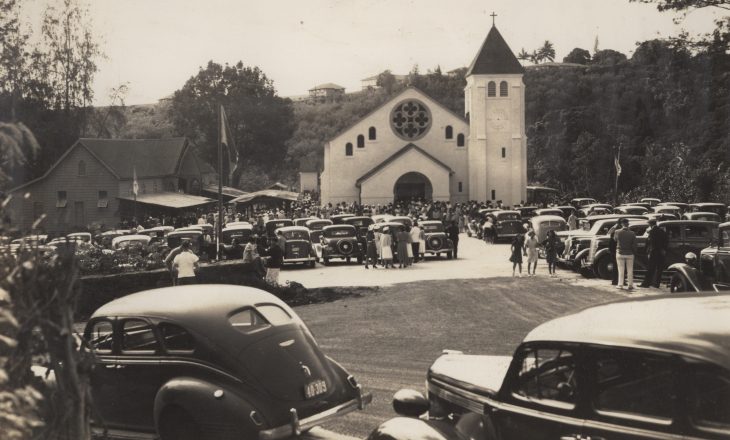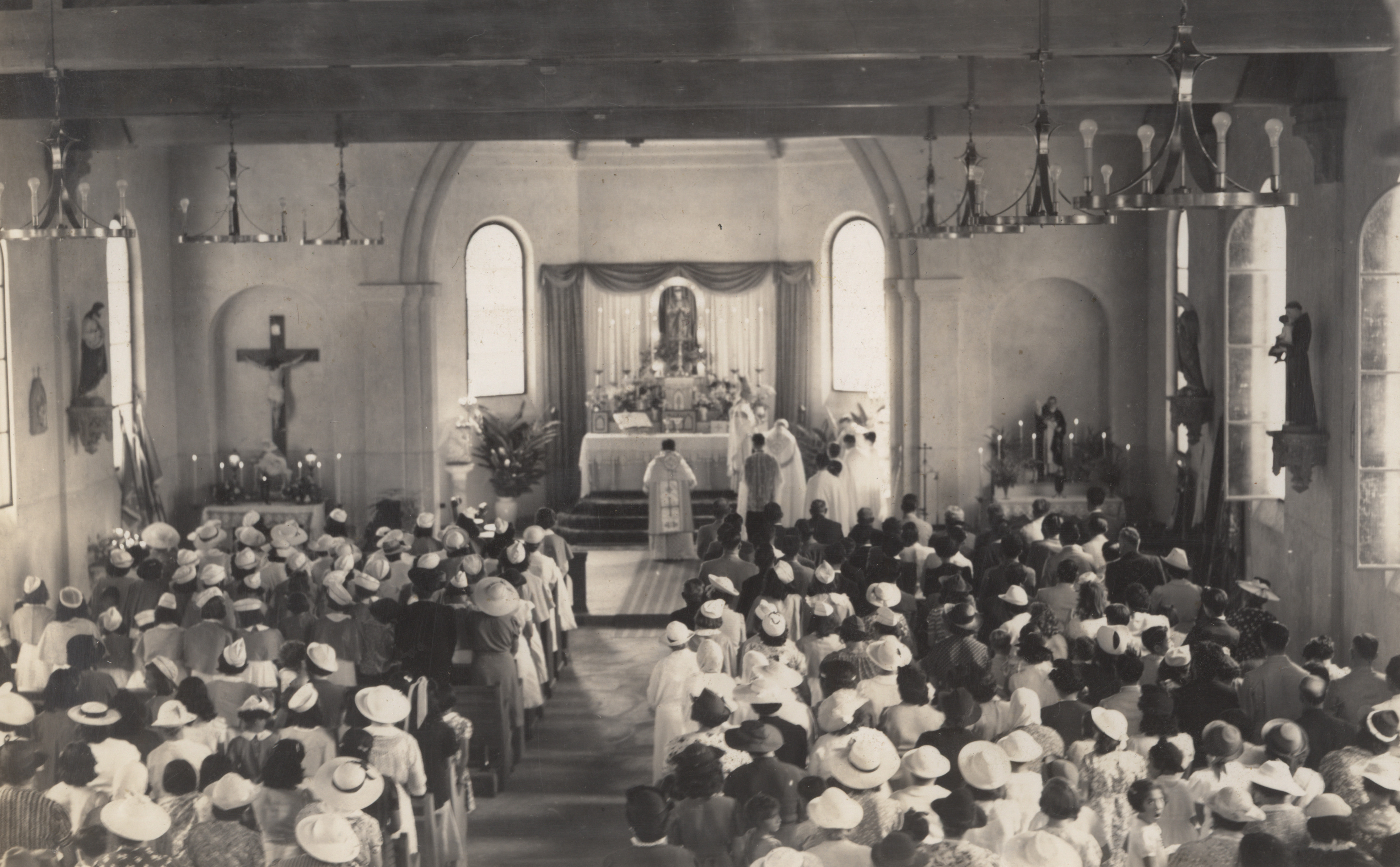The historic Immaculate Conception Church


Story by Hank Soboleski
In 1882, Roman Catholic Bishop Herman Koeckemann purchased land at Kapaia from sugar planter Paul Isenberg on which to build a church for Catholics living in Lihu‘e and Hanama‘ulu.
Construction of the church was completed in 1884, under the direction of the Rev. Libert Boeynaems, with the assistance of Portuguese laborers and a plantation carpenter.
Boeynaems, by the way, would also build the first St. Catherine Church at Kealia in 1887 and Sacred Heart Church in ‘Ele‘ele in 1889.
Described as being a wooden, Gothic-style church with a high steeple, round dormer windows and measuring 20 by 40 feet in size, the Kapaia church was dedicated to the Immaculate Conception by Koeckemann.
The church soon became too small to accommodate the increasing number of Catholics in Lihu‘e.
Therefore, it was enlarged by the Rev. Emmeran Schulte sometime in the 1890s from its original 40-foot length to 70 feet.
It was also expanded a second and a third time, with two wings being added to the sides that transformed it into the shape of a “T.”
Meanwhile, additional land adjacent to the church had been purchased by Bishop Gulstan Ropert from Lihu‘e Plantation in 1896 for a cemetery lot and a rectory, with Schulte then supervising rectory construction.
Although old-timers voiced some reluctance to give up the old wooden church, all parishioners finally agreed by the late 1930s that a larger church was needed.
Consequently, they went ahead to contribute money, talent, labor and prayers to build it.
Architect J.B.A. Van Oort designed the new church, and Grove Farm Company, with expertise in building concrete structures, was chosen to build it.
After service to the faithful for 55 years, the original wooden church was replaced by the new church.
The new Immaculate Conception Church, which stands in Kapaia today, featured arched windows of amber-colored glass, a choir loft, plenty of room for the growing number of parishioners and a bell tower.
On Dec. 10, 1939, Bishop Stephen Alencastre presided over its dedication and blessing ceremonies that were attended by over 1,000 Catholics.
